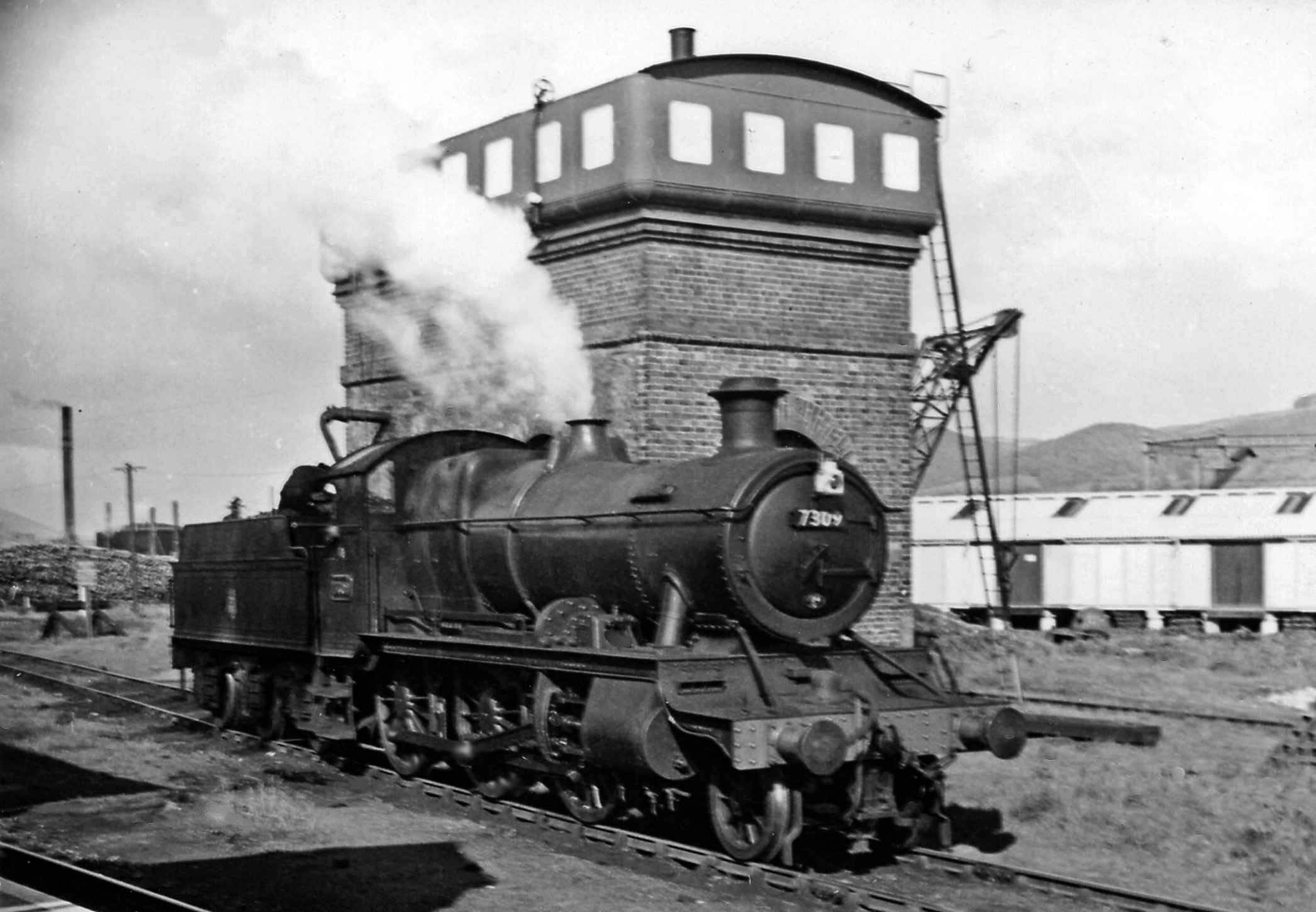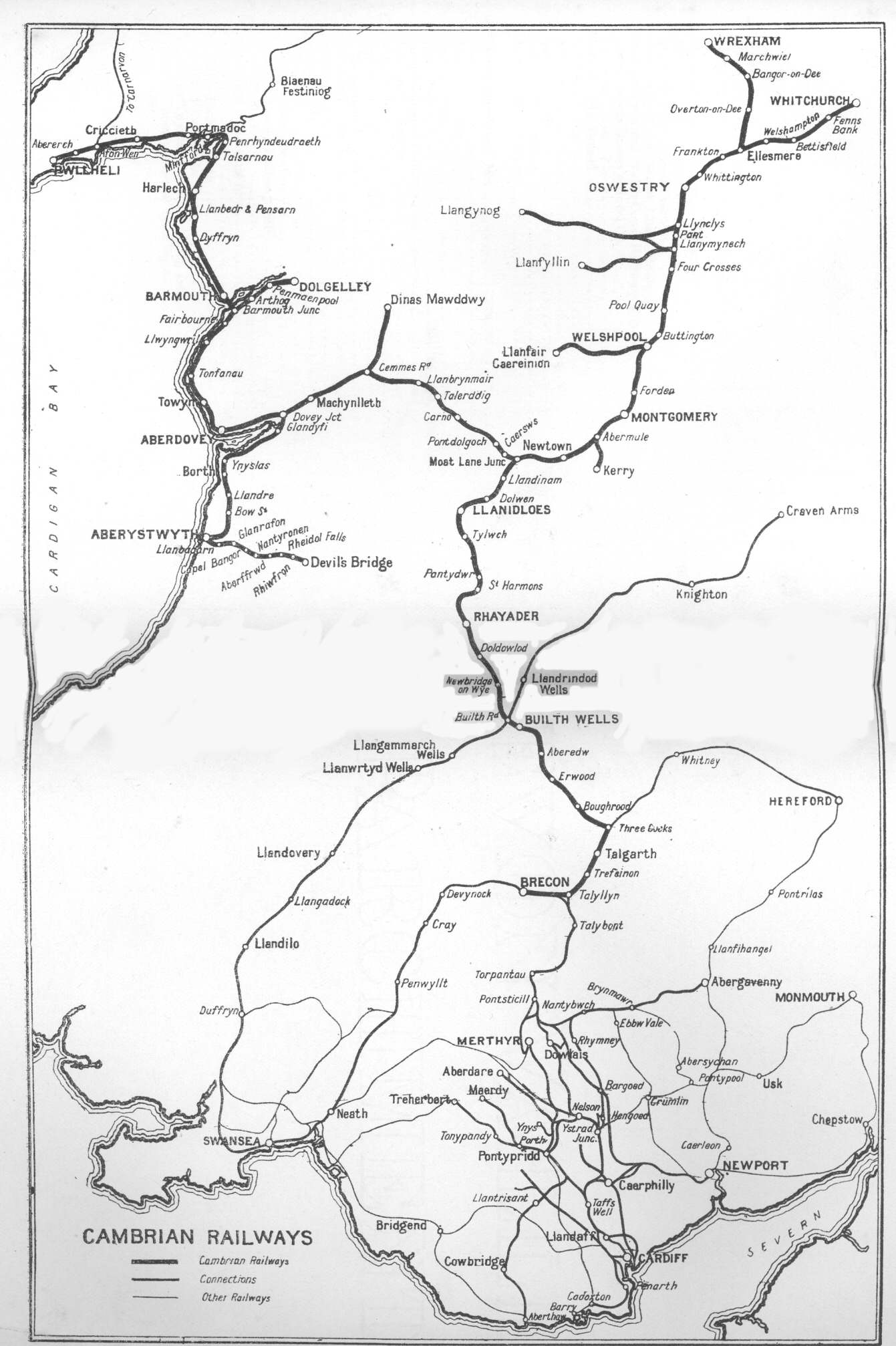|
Buttington Railway Station
Buttington railway station was a station in Buttington, Powys, Wales. The station was opened in November 1860, several months after the line that served it (the Oswestry and Newtown Railway). A second line - the jointly operated Shrewsbury and Welshpool Railway reached the station in January 1862. It was substantially rebuilt (with additional platforms) in 1893 by the Cambrian Railway, when the route west to Welshpool was doubled. It was closed to both passenger and goods traffic on 12 September 1960, along with all the other intermediate stations on the Shrewsbury to Welshpool section. The former O&NR route to Oswestry Oswestry ( ; ) is a market town, civil parish and historic railway town in Shropshire, England, close to the Welsh border. It is at the junction of the A5, A483 and A495 roads. The town was the administrative headquarters of the Borough of ... and Whitchurch subsequently closed in January 1965, leaving just the Shrewsbury to Welshpool line in ope ... [...More Info...] [...Related Items...] OR: [Wikipedia] [Google] [Baidu] |
Buttington
Buttington (Welsh: ''Tal-y-bont'') is a village in Powys, Wales, less than 3 km from Welshpool and about 300 m from the River Severn, in the community of Trewern. The Montgomery Canal passes through the village. The village stands on a slight rise above the river's floodplain, by the ancient ford called Rhyd-y-groes, where Offa's Dyke meets the Severn. The ford retained strategic value: reportedly in 1039 a battle took place here between Welsh and English forces. The Battle of Buttington At Buttington in 893 a combined Welsh and Mercian army under Æthelred, Lord of the Mercians, defeated a Danish army which had marched from Essex. This was the decisive battle in the war against the Viking invasion of the 890s. The Buttington Oak stood near the village until February 2018 and was said to have been planted by local people to commemorate the battle. Notable people *Sir William Boyd Dawkins Sir William Boyd Dawkins (26 December 183715 January 1929) was a British geolog ... [...More Info...] [...Related Items...] OR: [Wikipedia] [Google] [Baidu] |
Whitchurch (Salop) Railway Station
Whitchurch (Shropshire) railway station serves the town of Whitchurch in Shropshire, England. The station is 18¾ miles (30 km) north of Shrewsbury on the Welsh Marches Line. The station is maintained and served by Transport for Wales. History The station opened on 1 September 1858 by the LNWR-backed Crewe and Shrewsbury Railway. It was once the junction for the Cambrian Railways Oswestry, Ellesmere and Whitchurch Railway line to Oswestry and Welshpool (the former Cambrian mainline to ), and the Whitchurch and Tattenhall Railway. The former was closed as a result of the Beeching Axe in January 1965, whilst the latter was closed to passengers by the British Transport Commission in September 1957Disused Stations - Whitchurch Retrieved 11 November 2013 and completely in January 1963. The site ... [...More Info...] [...Related Items...] OR: [Wikipedia] [Google] [Baidu] |
Railway Stations In Great Britain Opened In 1860
Rail transport (also known as train transport) is a means of transport that transfers passengers and goods on wheeled vehicles running on rails, which are incorporated in tracks. In contrast to road transport, where the vehicles run on a prepared flat surface, rail vehicles (rolling stock) are directionally guided by the tracks on which they run. Tracks usually consist of steel rails, installed on sleepers (ties) set in ballast, on which the rolling stock, usually fitted with metal wheels, moves. Other variations are also possible, such as "slab track", in which the rails are fastened to a concrete foundation resting on a prepared subsurface. Rolling stock in a rail transport system generally encounters lower frictional resistance than rubber-tyred road vehicles, so passenger and freight cars (carriages and wagons) can be coupled into longer trains. The operation is carried out by a railway company, providing transport between train stations or freight customer facil ... [...More Info...] [...Related Items...] OR: [Wikipedia] [Google] [Baidu] |
Welshpool Railway Station
, symbol_location = gb , symbol = rail , image = File:The old station at Welshpool (geograph 2299927).jpg , borough = Welshpool, Powys , country = Wales , coordinates = , grid_name = Grid reference , grid_position = , manager = Transport for Wales , platforms = 2 , code = WLP , classification = DfT category F1 , years = 14 August 1860 , events = opened , years1 = 18 May 1992 , events1 = Original station closed and new station opened on track realignment. , mpassengers = , footnotes = Passenger statistics from the Office of Rail and Road Welshpool railway station on the Cambrian Line in Powys, mid-Wales, serves the town of Welshpool ( cy, Y Trallwng). History Built by the Oswestry & Newtown Railway, the original station opened on 14 August 1860. The line was initially opera ... [...More Info...] [...Related Items...] OR: [Wikipedia] [Google] [Baidu] |
Pool Quay Railway Station
Pool Quay railway station was a station in Pool Quay, Powys, Wales. The station was opened on 1 May 1860 and closed on 18 January 1965. References Disused railway stations in Powys Railway stations in Great Britain opened in 1860 Railway stations in Great Britain closed in 1965 Former Cambrian Railway stations Beeching closures in Wales {{Wales-railstation-stub ... [...More Info...] [...Related Items...] OR: [Wikipedia] [Google] [Baidu] |
London And North Western Railway
The London and North Western Railway (LNWR, L&NWR) was a British railway company between 1846 and 1922. In the late 19th century, the L&NWR was the largest joint stock company in the United Kingdom. In 1923, it became a constituent of the London, Midland and Scottish (LMS) railway, and, in 1948, the London Midland Region of British Railways: the LNWR is effectively an ancestor of today's West Coast Main Line. History The company was formed on 16 July 1846 by the amalgamation of the Grand Junction Railway, London and Birmingham Railway and the Manchester and Birmingham Railway. This move was prompted, in part, by the Great Western Railway's plans for a railway north from Oxford to Birmingham. The company initially had a network of approximately , connecting London with Birmingham, Crewe, Chester, Liverpool and Manchester. The headquarters were at Euston railway station. As traffic increased, it was greatly expanded with the opening in 1849 of the Great Hall, designed by P ... [...More Info...] [...Related Items...] OR: [Wikipedia] [Google] [Baidu] |
Breidden Railway Station
Breidden railway station was a station in Middletown, Powys, Wales. The station closed in 1960. There was a station house and two staggered platforms as well as a goods siding. The station has been demolished. References Further reading * Disused railway stations in Powys Railway stations in Great Britain opened in 1862 Railway stations in Great Britain closed in 1960 Former Great Western Railway stations Former London and North Western Railway stations {{Wales-railstation-stub ... [...More Info...] [...Related Items...] OR: [Wikipedia] [Google] [Baidu] |
Oswestry Railway Station
Oswestry railway station is a Grade II listed heritage railway station in Oswestry, Shropshire, England. It was closed when passenger services were withdrawn in 1966. The station building today is used as commercial premises although the Cambrian Railways Society are restoring it. History Great Western Railway The railway was first opened by the Great Western Railway (GWR) who opened its single platform station on 1 January 1849 on a branch from Gobowen. Under the Railway Act 1921, the Cambrian Railways was allocated to the GWR. The GWR closed its competing station on 7 July 1924 and diverted all services to either pass through or terminate at the adjacent former Cambrian Railways station. The main GWR service integrated was the shuttle to Chester via Gobowen on the Shrewsbury-Chester line. The GWR immediately made the Cambrian Railways/London & North Western Railway engine shed its divisional base for the new Oswestry locomotive division, allocating it code: OSW. In 1929, t ... [...More Info...] [...Related Items...] OR: [Wikipedia] [Google] [Baidu] |
Powys
Powys (; ) is a Local government in Wales#Principal areas, county and Preserved counties of Wales, preserved county in Wales. It is named after the Kingdom of Powys which was a Welsh succession of states, successor state, petty kingdom and principality that emerged during the Middle Ages following the end of Roman rule in Britain. Geography Powys covers the historic counties of Montgomeryshire and Radnorshire, most of Brecknockshire, and part of Denbighshire (historic), historic Denbighshire. With an area of about , it is now the largest administrative area in Wales by land and area (Dyfed was until 1996 before several Preserved counties of Wales, former counties created by the Local Government Act 1972 were abolished). It is bounded to the north by Gwynedd, Denbighshire and Wrexham County Borough; to the west by Ceredigion and Carmarthenshire; to the east by Shropshire and Herefordshire; and to the south by Rhondda Cynon Taf, Merthyr Tydfil County Borough, Caerphilly County Bor ... [...More Info...] [...Related Items...] OR: [Wikipedia] [Google] [Baidu] |
Cambrian Railway
The Cambrian Railways owned of track over a large area of mid Wales. The system was an amalgamation of a number of railways that were incorporated in 1864, 1865 and 1904. The Cambrian connected with two larger railways with connections to the northwest of England via the London and North Western Railway, and the Great Western Railway for connections between London and Wales. The Cambrian Railways amalgamated with the Great Western Railway on 1 January 1922 as a result of the Railways Act 1921. The name is continued today in the route known as the Cambrian Line. History Creation of the Cambrian Railways: 1864 The Cambrian Railways Company was created on 25 July 1864 when the Cambrian Railways Act of Parliament received Royal Assent. The company was formed by amalgamating most of the railway companies in mid Wales: the Oswestry and Newtown Railway, the Llanidloes and Newtown Railway, the Newtown and Machynlleth Railway and the Oswestry, Ellesmere and Whitchurch Railway. The sh ... [...More Info...] [...Related Items...] OR: [Wikipedia] [Google] [Baidu] |
Shrewsbury And Welshpool Railway
The Shrewsbury and Welshpool Railway (S&WR) is a standard gauge railway which connects the towns of Shrewsbury and Welshpool. It opened in 1861 and the majority of the railway continues in use. History Incorporation The S&WR was incorporated in an Act of Parliament in 1856. Although initially an independent company, the line was to be operated and maintained by the London and North Western Railway (LNWR). Opening Construction under the Act began in 1859, and by 1861 the line from Shrewsbury to Minsterley was completed, and opened on 14 February 1861. Construction of the main line to Welshpool was completed later in 1861 and officially opened on 27 January 1862. Minsterley branch The Minsterley branch served the agricultural communities of the area, but its main purpose was to carry lead from the mines along the Stiperstones hills. These mines were connected to the S&WR at Pontesbury by the narrow gauge Snailbeach District Railways which opened in 1873 and closed in 1959. T ... [...More Info...] [...Related Items...] OR: [Wikipedia] [Google] [Baidu] |






